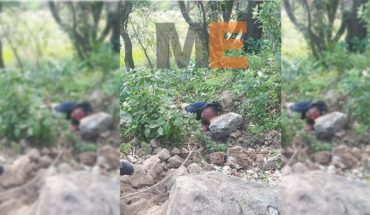Pain is usually recognized as a red flag that our body sends to protect us. However, when this lasts for three months or more, it is considered chronic and ceases to be a defense measure to become a disease that reduces the quality of life of patients.
In Chile, this pathology has a high prevalence: according to research by the Chilean Association for the Study of Pain and Palliative Care (Ached-CP), 32% of the country’s population suffers from chronic non-oncological pain, 60% has moderate pain and, in the case of severe conditions, 20% maintain this type of ailment.
On the other hand, 44% of people suffering from the disease have been in pain for more than a year.
On the main impacts on patients with chronic pain, Dr. Carolina Rivera, physiatrist and president of the Chilean Society of Physical Medicine and Rehabilitation, Sochimfyr, explains that “from the emotional point of view, people affected by this pathology feel somewhat stigmatized not only by doctors, but also from the family environment. ”
He added that this is because “the entire daily routine becomes based on pain, which generates symptoms such as anxiety, frustration and depressive symptoms when not being able to manage the condition. From the physical, multiple symptoms appear, but mainly there is muscle fatigue in hands, arms and legs from stopping using them when feeling intense pain. ”
Therefore, he emphasizes that the approach must be interdisciplinary, considering the “clinical psychology and the specialties indicated to reduce psychological risk factors. People should know that it is possible to improve their condition and that they can learn to manage pain, increasing their self-efficacy.”
In this regard, the specialist adds that “suffering from chronic pain generates a disability, since the intensity of discomfort does not allow daily life as it was usually being carried out, causing a snowball effect that reduces all aspects of the person’s life.”
Keys to understanding and assessing pain
In the framework of World Day Against Pain, Dr. Leonardo Lourtau, medical director of Grünenthal Chile, highlights some essential data to understand the disease:
Chronic pain, in some cases, is a disease in itself: recently, the World Health Organization (WHO) updated the International Classification of Diseases (ICD-11), incorporating concepts that allow to better classify the pathologies that occur with chronic pain and identifies some types of chronic pain as a disease in itself.
It is one of the main reasons for medical consultation: Among the most common causes of consultation are lumbago, osteoarthritis, and headaches[ii]. Their initial contact is usually with primary care and internal medicine physicians. “We must continue to advance in promoting education among patients and physicians, to understand and effectively treat chronic pain,” suggests Leonardo Lourtau.
Chronic pain can be disabling: WHO indicates that one in three people with chronic pain would lose the ability to carry out their daily activities normally[iii]. “In particular, patients may have difficulty performing basic tasks such as exercising, sleeping properly and even walking,” he says.
Access to their treatment is a human right: this is stated by the (WHO). “It is important to emphasize that each patient experiences pain individually, so their treatment should also be approached in a personalized way and, ideally, with a multidisciplinary team,” he emphasizes.
Their correct and timely evaluation is essential to provide relief to the patient: “Some patients may go years without finding a proper diagnosis and treatment for their pain, which in the long run makes it even harder to find relief,” he explains.
“The focus should also be on rehabilitation and recovering functionality, so that the person can improve their quality of life,” the doctor emphasized.
The evaluation of chronic pain requires a complete and detailed medical history, thorough clinical examinations and the use of pain self-assessment scales, such as the Visual Analogue Scale (EVA), which would allow estimating the intensity of the patient’s pain.
Pain in Chile
The doctor, Carolina Rivera, points out that we can still improve as a country in the approach to pain, for this she stressed that “we lack more Pain Units, since there are very few throughout Chile, as well as more experts in this disease and, finally, public policies that allow a timely diagnosis and improve access to medicines. ”
On September 9, unanimously, the Senate approved in general the bill on chronic non-oncological pain and fibromyalgia, which continues in legislative process.
This, as a result of the constant discrimination suffered by their patients, mainly through the refusal of medical licenses and lack of access to health care. However, there is still some way to go in this regard.
Fibromyalgia is one of the pathologies that also presents chronic pain and that, due to its difficulty at the time of diagnosis, affects the quality of life of people.
Follow us on





